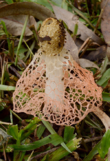Collections
Sort by:
Permanent collection
Edited by Samantha C. Karunarathna, Danushka Sandaruwan Tennakoon, Ajay Kumar Gautam
Saprobic fungi, also known as saprophytic fungi, are considered the “key players” in decomposition and essential ecosystem components. They have a cosmopolitan distribution and can occur in almost all environments, such as aquatic, terrestrial, marine, mangroves, and even extreme environments (e.g., ...
Papers published: 64
| Total pages: 1666
Taxa:
Botryosphaeriales (1), Saccharomycetales (1), Cantharellales (2), Dipodascaceae (1), Hymenochaetales (1), Conidial Fungi (5), Botryosphaeriaceae (1), Sordariomycetes (2), Thelephoraceae (1), Ascomycota (34), Phaeosphaeriaceae (1), Hypocreales (1), Schizoporaceae (1), Zygomycota (1), Helotiales (1), Basidiomycota (20), Entolomataceae (2), Agaricales (5), Thelephorales (1), Arthoniomycetes (1), Pezizomycetes (1), Strophariaceae (1), Agaricomycetes (4), Leotiomycetes (2), Dothideomycetes (8), Russulales (1), Auriculariales (1), Tubeufiaceae (1), Hymenochaetaceae (1), Pleosporales (3), Nectriaceae (1), Pleosporomycetidae (1)
Subject:
Taxonomy (63), Molecular biology (10), Biogeography (2), Molecular systematics (21), Data analysis & Modelling (4), Evolutionary Ecology (2), Biodiversity & Conservation (13), Identification key (1), DNA barcoding (6), Habitats, Ecosystems & Natural Spaces (3), Phylogeny (33)
Collection
Closed for submission
Edited by Olivier Raspé, Rui-Lin Zhao, Jennifer Luangsa-ard
Tropical Asia encompasses several biodiversity hotspots and, consequently, is home to an impressive diversity of macrofungi. However, despite an increase in the number of studies during the last decade, this diversity remains poorly known. The objectives of this topical collection are to group paper ...
Papers published: 20
| Total pages: 446
Taxa:
Bankeraceae (1), Polyporales (1), Agaricomycetes (4), Hypocreales (1), Russulaceae (1), Russulales (1), Agaricales (1), Boletaceae (2), Pleurotaceae (1), Physalacriaceae (1), Ascomycota (3), Basidiomycota (11), Thelephorales (1), Boletales (3), Sordariomycetes (1), Entolomataceae (1), Paxillaceae (1)
Subject:
Biodiversity & Conservation (1), Molecular systematics (8), Taxonomy (20), Phylogeny (13), Habitats, Ecosystems & Natural Spaces (1), Nomenclature (1), Climate change (1)
Regions:

